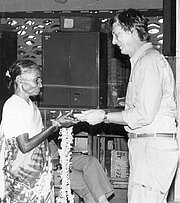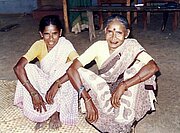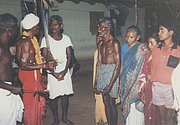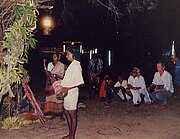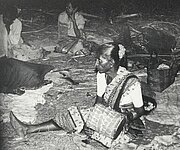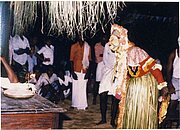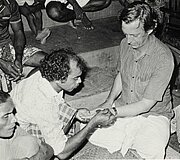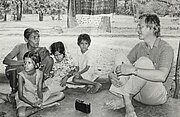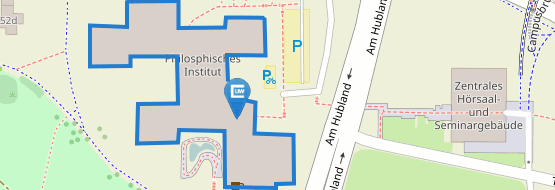Illustrations
Photographs and Notes
The photographs for this article were taken by S. A. Krishnaiah, Senior Folklorist, Regional Resource Centre for Folk Performing Arts, Udupi and reproduced here with his permission. Krishnaiah and I often worked together on fieldwork projects. Not only are the photographs his, much of the collected knowledge and information was gathered by he and I together in such a way that it would be impossible to credit one or another of us as the collector.
Kargi Mundaldi
Kargi received a State Government, Karnataka Janapada and Yakshagana Academy award, 1989, the first such award given for the singing of pāḍdanas. The award is regarded as the most prestigious achievement award for folk performers in the state. She also received awards from Tulu honorary and academic academies. Kargi passed away on April 25th, 1994, a full moon night, and the night of the Siri Jatra at Hiriyadka, where she had Siri "darśana" (possession by a siri spirit) all her life. Local Tulu and Kannada newspapers carried articles about her death under the headline, "The Queen of Pāḍdana Singers Is No More"
Kargi and Payyu. Although not taken during a recording session, this is a familiar setting to the author as he had recorded hundreds of hours of pāḍdanas, stories, and conversations about Tulu oral literature and religious practice. Often the recordings took place in the courtyard of Kargi and Salya's house at the edge of Anjar village and lasted far into the night. At other times we recorded on the veranda of my house.
Kargi, Salya, and their daughter-in-law and grandson receive blessings from their caste and household deity, Kordabbu. All through Tulunad, Kordabbu is the hero and patron of the Mundala community. Salya was a patri of Kordabbu and performed daily pūja at the Anjar village Kordabbu shrine near Hiriyadka. Besides being a devotee of Siri, Kargi herself wasdeeply devoted to Kordabbu.
Pāḍdanas in the Bhūta Kōla Context
Domba Nalike and Duje are from Arava Village, Ninibaakilu House, Aladangadi, Beltangady Taluk, Karnataka. At the time, Domba was about 35 years old and his wife around 30. They are of the Nalike community. The Kalkuda kōla is performed during the Siri Jātra, as are the kōlas of Kshemakalla Panjurli and Maysandaya (see below), but by different communities of performers. Although today the activities of the Siri Jātra dominate, it is likely that earlier (say before 1950) the several kōlas had been the main, if not the only, ritual performances.
This is Appi Paravedi singing a pāḍdana during a kōla at the Urmbitota Siri Jātra (see photo above) Whether it is the Kshemakalla Panjurli or Maysandaya is unclear in the photo. In either case, she later told me that her younger male relative who performed the dance during the kōla was not very familiar with the pāḍdana and would not have been able to sing it alone.
Pāḍdanas in Other Contexts
Kōṭi and Chennaya are remembered by their song during the preliminary preparations of a wedding ceremony among the families of the Billava community. Here, the author and S. A. Krishnaiah had come to the village of Nandolige to record pāḍdanas as sung by Sitakka Pujarti and Paddakka Pujarti. They were then invited to attend this ceremony during which men and women of the Billava community adorn their hands with henna (mehendi) designs. Women of the community sing the portion of the long Kōṭi Chennaya pāḍdana where the twin heroes receive their first haircut, a sort of initiation/puberty ritual, removing the taint of birth and childhood to become "radiant". Being good singers, Sitakka and Paddakka took turns leading the singing during this activity is amongst the women.
Here, the author is talking with Kargi Pujarti of Urikitota after recording her singing the Siri Pāḍdana. Kargi Pujarti becomes possessed by Siri during the annual Siri Jātra at Urikitotta. Her daughter (front row, left), also named Kargi, has now taken her place at the Siri Jātra. The Siri Pāḍdana is one of Tulunad's longest and most famous pāḍdanas, but it is not sung during a kōla, nor even sung in its entirety as a fieldsong. It is primarily transmitted by women, but some men – especially those who serve as Kurmar during the Siri Jātra – also know the pāḍdana. However, only very small portions of it are sung by Siri women and male Kumars during a Siri Jātra. At the Urikitota annual Siri Jātra only two women and a Kumar become possessed regularly. Urikitotta is said by some to be where Siri's granddaughters, Abbaga and Daraga, drowned in the well, as described in the Siri Pāḍdana.


